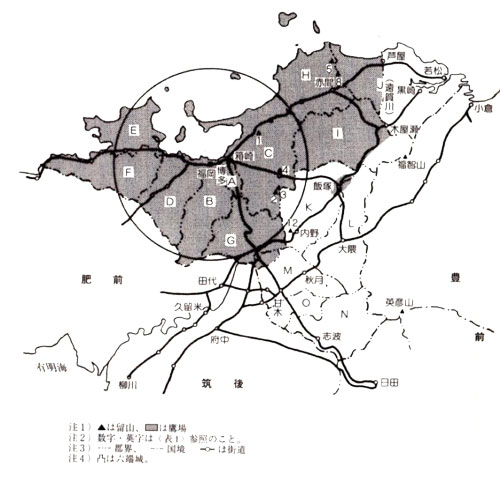The purpose of the study group
We have just started the workshop with the theme of "hawks, hawking grounds and the environment on Japanese Islands".
Our workshop aims to produce academically reliable knowledge to maintain biodiversity and sustainable societies form the view point of historical science. We focus on hawking grounds that were established across various Hans during the Edo period nation-wide (from the 17th century to the middle of the 19th). We consider each factor of hawking grounds and their environment basis comprehensively, from politics, social infrastructure, human life, culture and areas. Furthermore, we elucidate the scheme of interaction for conservation, wherein the environmental condition maintained the ecosystem with hawks at the apex.
We use the word “hawks” as the concept which symbolized all creatures. Because Hawks were located in the apex of the ecosystem.” Hawking grounds” is used as the concept which include all areas of prohibition to not only hunting (fishing and so on) but also entering. So we focus on the hawking grounds which make nature protection and what kind of creatures were protected and multiplication was established from the inside of an ecosystem where hawks were the apex of the ecosystem. And as a result, at this workshop, we would like to make clear whether people managed the creatures who multiplied too much and gave the influence to the environment, the person's life and cultural activities which has formed from the environmental change conversely also, and make clear about the historical process of the interaction such as the policy and the system by political power and look for various factors of environment.
Principal Investigator Chizuru Fukuda
Outline of research organization
Hawking has the long history from the ancient era. Japanese Emperors used hawks as the symbol which also shows off the power during the Yamato period, And during the medieval era, hawking became one of cultures for warrior because hunting belonged to their profession. The control of hawks and hunting became one of seigniory and the medieval lords respected hawking deeply that were formed medieval samurai society. So, tradition and culture group consider how cultural phenomena concerning hawks were succeeded since the antiquity era and how hawking became tradition and being spread through pre-modern society widely as traditional knowledge maintained with the royal authority and the seigniory.
Next, Eastern group and Western group are established to elucidate the concrete look of the environment rule through analysis of hunting grounds. The reason why we need the division of two Area, local vegetation is different from East to West in the Japanese archipelago. Eastern area has broadleaf trees and Western area has evergreen forest basically. We can think that a natural environment was preserved by using factors of environment different from Eastern area and Western area of hunting grounds as a condition, so we analyze each hunting grounds to make those special qualities (the different points between eastern and western) by each group.
The following figure indicated hunting grounds set area (Dot part) by Fukuoka feudal Han as an example. We find out that they were set as the wide range from the castle town Fukuoka to mountainous regions. Hunting grounds had the territory which included villages, cities, highways, forests and so on. We need to comprehend that hunting grounds gave influences to person's life and the environment obviously. So, life and area group consider that hawks and hawking grounds gave influences to person’s life and the environment multilaterally. Status and formality of hawkers and officers related to hawks, circulation of hunting birds and leather, gift-giving rituals and the meaning that hunting grounds was set with multi-level structure including cities, villages, forests and so on. We reconsider pre-modern history studies from the view point of hawks and hawking grounds.

This figure indicated hunting grounds set area by Fukuoka feudal Han (1626)
